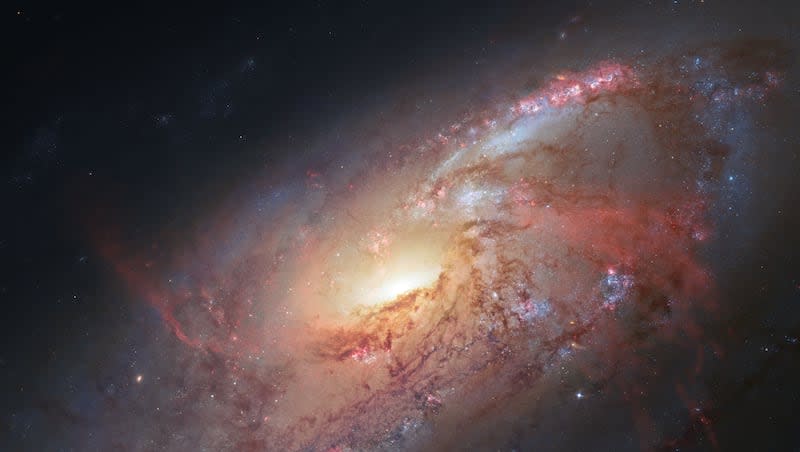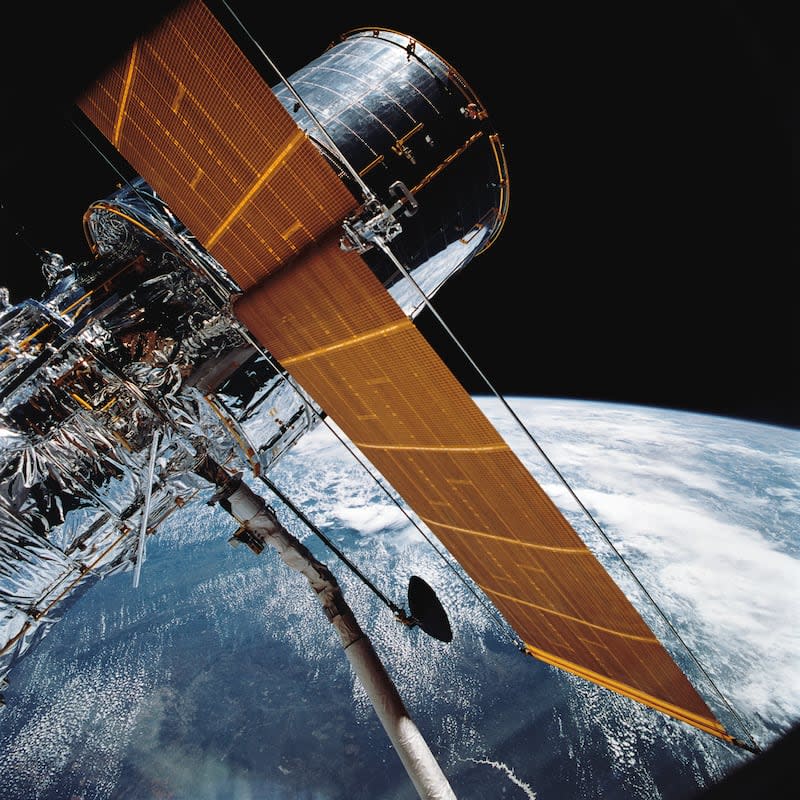Deseret News archives: When Hubble expanded our view of the universe

A look back at local, national and world events through Deseret News archives.
“Discovery blasted into a record-high shuttle orbit Tuesday with the $1.5 billion Hubble Space Telescope, an astronomical marvel that will enable man to peer deeper into the universe than ever before.”
So read a Deseret News article from April 24, 1990.
And while it wasn’t the first space telescope, Hubble, or HST as some lovingly called it, has proven to be versatile and durable. It was replaced in the stellar spotlight in 2021 by NASA’s James Webb Space Telescope, but the Hubble continues on and on and on.
“The shuttle roared through a thin bank of clouds into a clear blue sky on a 700-foot column of flame almost three minutes late at 6:34 a.m. MDT. The ship carried five astronauts and NASA’s most complex and costliest payload.
“‘Liftoff of the shuttle Discovery with the Hubble Space Telescope, our window on the universe,’ announced NASA launch commentator George Diller said at the time. ‘It was one of the prettiest launches I ever saw, and it’s a beautiful day to have Hubble Space Telescope in orbit instead of here on Earth like it’s been for so many years,’ said NASA administrator Richard Truly.”
Despite the smooth lunch, the Hubble telescope was soon struck with blurry vision due to an issue with a mirror.
“It was the butt of jokes by late night comics; an editorial cartoon said its designer was Mr. Magoo, a nearsighted cartoon character. It seemed like a massively overbudget screw-up.
“But once it was fixed three-and-a-half years later with a new set of glasses, Hubble shed its myopic reputation. It began producing far-sighted images of space that seemed more art then astronomy.”
Hubble helped pinpoint the age of the universe at 13.7 billion years, explain what’s in it, and show where it is going. Its photos hinted that as a planet, Earth may not be alone. Just one picture of warped distant galaxies provided visual proof of Einstein’s general relativity theory, per reports.
NASA expects the Hubble, which has sent back around a million images through the years, is expected to keep working into the 2030s.
In celebration of today’s 34th anniversary of the launch of NASA’s legendary Hubble Space Telescope in 1990, astronomers took a snapshot of the Little Dumbbell Nebula. Also known as Messier 76, M76, or NGC 650/651, it is composed of a ring, seen edge-on as the central bar structure, and two lobes on either opening of the ring.


